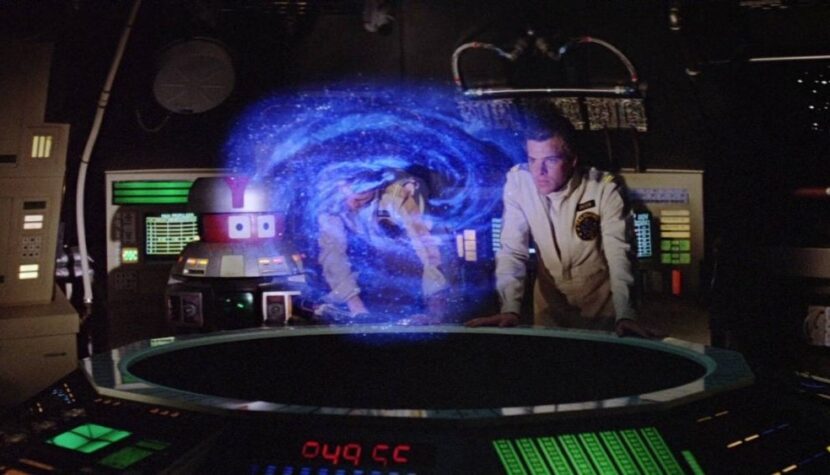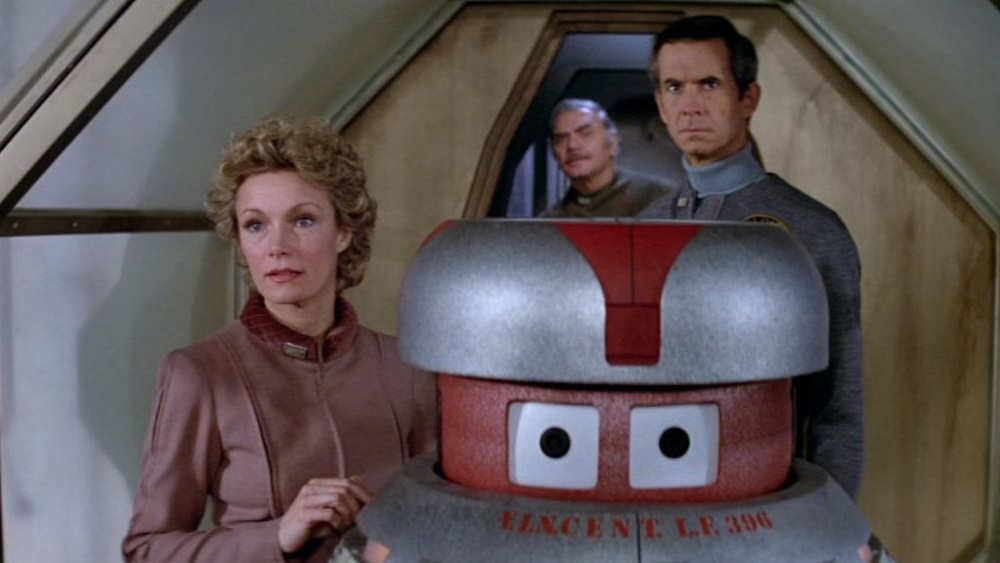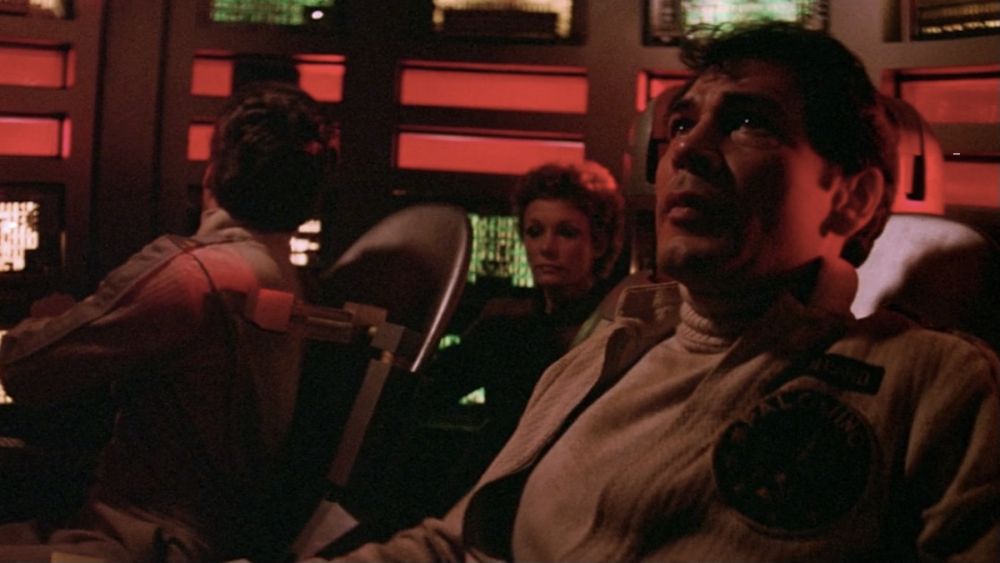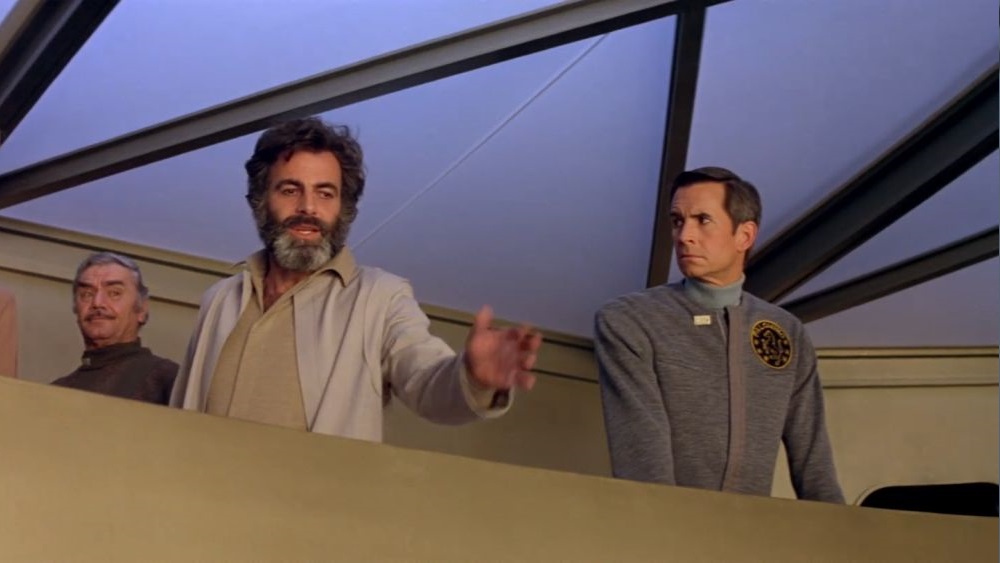THE BLACK HOLE. Disney’s science fiction like a knockoff of “Star Wars.”

I have many criticisms of Disney’s studio. These include, among others, audience infantilization, butchering literary classics, plagiarism, political correctness, corporatism, mistreatment of employees and animals in amusement parks, unauthorized use of actors’ likenesses, and the creation of “The Black Hole”.
It’s the year 2130. The spaceship USS Palomino traverses the edges of the universe on a mission to discover extraterrestrial life. The crew consists of Captain Holland, Lieutenant Pizer, scientists McCrae and Durant, journalist Booth, and a small robot named Vincent. During their journey, the ship encounters a black hole and the nearby vessel USS Cygnus, which disappeared 20 years ago. Observation reveals a mysterious force field around the Cygnus, allowing the cruiser to resist the gravitational pull of the black hole. Due to a malfunction, the Palomino must dock aboard the Cygnus, where the crew meets the renowned scientist, Dr. Reinhardt. The distinguished physicist explains that twenty years ago, he sent Cygnus’ crew back to Earth and remained aboard the ship to study the black hole with the help of his constructed robots. Reinhardt intends to fly the Cygnus into the heart of the black hole as the first human in history. However, when the Palomino crew encounters the worn-out robot, Bob, and witnesses inexplicable events, they become suspicious of the scientist.

Initially, “The Black Hole” was supposed to be a disaster film in the style of “The Poseidon Adventure” (1972) by Ronald Neame and “The Towering Inferno” (1974) by John Guillermin—except set in space. The project’s creators were screenwriters Bob Barbash and Richard Landau, who convinced Disney to finance the film. The script underwent constant revisions, with at least six writers contributing, ultimately using Jeb Rosebrook’s version with revisions by Gerry Day (Barbash and Landau are credited only for the story). Television director Gary Nelson was assigned to direct, and the cast included Maximilian Schell, Anthony Perkins, Robert Forster, Joseph Bottoms, Yvette Mimieux, Ernest Borgnine, with Roddy McDowall and Slim Pickens providing voices for the robots Vincent and Bob, respectively, without front credit. Nelson also wanted to cast Sigourney Weaver, but producers deemed her name unattractive. One can only imagine their reaction when “Alien” (1979) directed by Ridley Scott was released six months before “The Black Hole.”
Disney spared no expense on production; with a budget of $20 million (plus an additional $6 million for advertising and merchandise), it was the most expensive production in the studio’s history at the time. A significant portion of the costs went to special effects generated using both models and computer technology. Disney initially sought to rent equipment from George Lucas’s Industrial Light & Magic, responsible for the effects in “Star Wars” (1977), but after prohibitive costs and terms, they created ACES, their version of an automated camera system. Computerized technology allowed for filming of actors and moving models (spaceships, meteors, robots, etc.) with double exposure against non-existent backgrounds. The shots were then combined with hand-painted matte backgrounds (nearly 150 were created, but only 13 were used). Special effects production was overseen by a team led by father and son duo Peter and Harrison Ellenshaw; the former even delayed retirement to work on the film.

Filming lasted over six months and was exhausting; there were days when only one shot could be captured due to time-consuming preparations. Another six months were spent on complex post-production. “The Black Hole” premiered in December 1979 as Disney’s first PG-rated film due to uncensored expressions (“hell” and “damn”) and the brutal death of one character. Box office revenues were only $35 million, a disappointing result. Although the film received an Oscar nomination for Best Cinematography and Special Effects, reactions from audiences and critics were mixed; while the visual aspects were praised, the plot was deemed clichéd and full of logical gaps, lacking in drama. Poor acting and dialogue were also criticized. Perhaps the most significant doubts arose from scientific inaccuracies. American astrophysicist Neil deGrasse Tyson dubbed “The Black Hole” the least scientific film of all time. “[The creators] not only misunderstood the physics of falling into a black hole, but if they had done it correctly, it would have been a much more interesting film,” lamented the scientist.
The above criticisms are valid, and watching the film is a tiresome experience. “The Black Hole” starts promisingly but quickly devolves into a track of schematic nonsense about a mad scientist with a vast spaceship at his disposal, not a dingy attic, and his acolytes are not decrepit golems but robots and humanoids. One cannot shake the feeling that this embarrassing film was an attempt to capitalize on the success of “Star Wars,” as the similarities are striking: action-packed adventures, laser guns, hooded characters, Vincent the robot reminiscent of R2D2, a metaphysical perception akin to the Force, John Barry’s orchestral music reminiscent of John Williams’ score, and so forth. References to Jules Verne’s “20,000 Leagues Under the Sea” and its Disney adaptation directed by Richard Fleischer in 1954, as well as “2001: A Space Odyssey” (2001) by Stanley Kubrick, are also present. In fact, “The Black Hole’s” finale almost borders on plagiarism of the famous “psychedelic” ending sequence from “2001,” stripped of its metaphysics and mystery.

Compared to other science fiction films of that time, the special effects have aged, making “The Black Hole” resemble low-budget B-movies like “Dünyayı Kurtaran Adam” (infamously dubbed the “Turkish Star Wars”); Aaron Lipstadt’s “Android” (1982) cost less than a million dollars and looks better today than Nelson’s film, which was twenty times more expensive. However, this could be overlooked if “The Black Hole” had a compelling story, original screenplay, and good acting. Unfortunately, it lacks all of these: the plot is idiotic and pieced together from other works, the characters are uninteresting and played with all the grace of store mannequins, and viewers care little about the fate of the crew, ship, or robots. The latter, Vincent and Bob, are among the most irritating screen characters of all time—right alongside Jar Jar Binks, Fabienne from “Pulp Fiction,” the kids from “Jurassic Park,” and the screamers from “Close Encounters of the Third Kind.” Who was this ridiculous film even made for? It’s too dark for children, too infantile for adults, and teenagers probably aren’t that undiscriminating.

